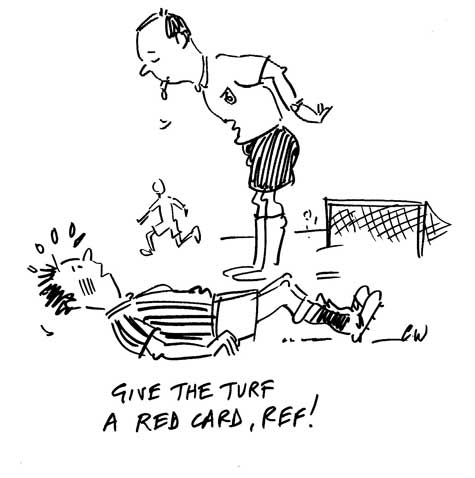|
|
|
AstroTurf, a leading maker of artificial grass for athletic fields, has agreed to a stringent new lead-safety standard in California under the settlement of a lawsuit brought by the state and local authorities after the non-profit Center for Environmental Health reported finding lead concentrations as high as 10,000 parts per million in the artificial turf made by dozens of manufacturers.
Artificial turf is made with a core of rubber 'crumbs' to produce a soft and forgiving surface. However, these crumbs, obtained by grinding up tyres, have been found to give off dozens of toxic, cancer-causing, mutation-
triggering chemicals and metals, which, on hot days, and especially if there is not much wind, could potentially
affect anyone using the turf. Some official bodies are still giving
assurances that the chemicals in artificial turf are little cause for concern, but environmentalists and a growing number of public officials around the world are questioning the wisdom of installing artificial sports surfaces, each of which can contain the equivalent of up to 26,000 tyres of unknown composition.
Click here for more research on chemical sensitivity First Published in July 2008 update in November 2009
|
|













